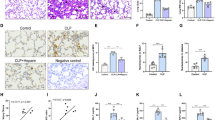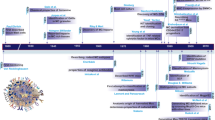Abstract
Vibrio cholerae cytolysin (VCC) is a pore-forming toxin that is secreted in precursor form (pro-VCC) and requires proteolytic cleavage in order to attain membrane-permeabilizing properties. Pro-VCC can be activated both in solution and membrane-bound state. Processing of membrane-bound pro-VCC can in turn be achieved through the action of both cell-associated and soluble proteases. The current investigation describes the interaction of VCC with human neutrophil granulocytes. It is shown that pro-VCC binds to these cells and is cleaved by cell-bound serine proteases. Membrane permeabilization leads to granulocyte activation, as witnessed by the generation of reactive oxygen metabolites and liberation of granule constituents. A mutant toxin with unaltered binding properties but devoid of pore-forming activity did not elicit these effects. The secreted proteases cleave and activate further bound- and non-bound pro-VCC. A positive feedback loop is thus created that results in enhanced cytotoxicity towards both the targeted granulocytes and towards bystander cells that are not primarily killed by the protoxin. Thus, activation of neutrophil granulocytes by VCC fuels a positive feedback cycle that will cripple immune defence, augment inflammation, and enhance the cytotoxic action of the toxin on neighbouring tissue cells.







Similar content being viewed by others
References
Ichinose Y, Yamamoto K, Nakasone N, Tanabe MJ, Takeda T, Miwatani T, Iwanaga M (1987) Enterotoxicity of El Tor-like hemolysin of non-O1 Vibrio cholerae. Infect Immun 55(5):1090–1093
Ramamurthy T, Bag PK, Pal A, Bhattacharya SK, Bhattacharya MK, Shimada T, Takeda T, Karasawa T, Kurazono H, Takeda Y et al (1993) Virulence patterns of Vibrio cholerae non-O1 strains isolated from hospitalised patients with acute diarrhoea in Calcutta, India. J Med Microbiol 39(4):310–317
Yamamoto K, Ichinose Y, Shinagawa H, Makino K, Nakata A, Iwanaga M, Honda T, Miwatani T (1990) Two-step processing for activation of the cytolysin/hemolysin of Vibrio cholerae O1 biotype El Tor: nucleotide sequence of the structural gene (hlyA) and characterization of the processed products. Infect Immun 58(12):4106–4116
Krasilnikov OV, Muratkhodjaev JN, Zitzer AO (1992) The mode of action of Vibrio cholerae cytolysin. The influences on both erythrocytes and planar lipid bilayers. Biochim Biophys Acta 1111(1):7–16
Zitzer A, Palmer M, Weller U, Wassenaar T, Biermann C, Tranum-Jensen J, Bhakdi S (1997) Mode of primary binding to target membranes and pore formation induced by Vibrio cholerae cytolysin (hemolysin). Eur J Biochem 247(1):209–216
Zitzer A, Zitzer O, Bhakdi S, Palmer M (1999) Oligomerization of Vibrio cholerae cytolysin yields a pentameric pore and has a dual specificity for cholesterol and sphingolipids in the target membrane. J Biol Chem 274(3):1375–1380
Moschioni M, Tombola F, de Bernard M, Coelho A, Zitzer A, Zoratti M, Montecucco C (2002) The Vibrio cholerae haemolysin anion channel is required for cell vacuolation and death. Cell Microbiol 4(7):397–409
Yamamoto K, Al-Omani M, Honda T, Takeda Y, Miwatani T (1984) Non-O1 Vibrio cholerae hemolysin: purification, partial characterization, and immunological relatedness to El Tor hemolysin. Infect Immun 45(1):192–196
Nair GB, Oku Y, Takeda Y, Ghosh A, Ghosh RK, Chattopadhyay S, Pal SC, Kaper JB, Takeda T (1988) Toxin profiles of Vibrio cholerae non-O1 from environmental sources in Calcutta, India. Appl Environ Microbiol 54(12):3180–3182
Ou TY, Liu JW, Leu HS (2003) Independent prognostic factors for fatality in patients with invasive vibrio cholerae non-O1 infections. J Microbiol Immunol Infect 36(2):117–122
Hlady WG, Klontz KC (1996) The epidemiology of Vibrio infections in Florida, 1981–1993. J Infect Dis 173(5):1176–1183
Anderson AM, Varkey JB, Petti CA, Liddle RA, Frothingham R, Woods CW (2004) Non-O1 Vibrio cholerae septicemia: case report, discussion of literature, and relevance to bioterrorism. Diagn Microbiol Infect Dis 49(4):295–297
Madden JM, McCardell BA, Shah DB (1984) Cytotoxin production by members of genus Vibrio. Lancet 2(8413):1217–1218
Qadri F, Bhuiyan TR, Dutta KK, Raqib R, Alam MS, Alam NH, Svennerholm AM, Mathan MM (2004) Acute dehydrating disease caused by Vibrio cholerae serogroups O1 and O139 induce increases in innate cells and inflammatory mediators at the mucosal surface of the gut. Gut 53(1):62–69
Viana CF, Melo DH, Carneiro-Filho BA, Michelin MA, Brito GA, Cunha FQ, Lima AA, Ribeiro RA (2002) Pro-inflammatory effects of cholera toxin: role of tumor necrosis factor alpha. Toxicon 40(10):1487–1494
Berghmans T, Crokaert F, Sculier JP (2002) Vibrio cholerae bacteremia in a neutropenic patient with non-small-cell lung carcinoma. Eur J Clin Microbiol Infect Dis 21(9):676–678
Safrin S, Morris JG Jr, Adams M, Pons V, Jacobs R, Conte JE Jr (1988) Non-O:1 Vibrio cholerae bacteremia: case report and review. Rev Infect Dis 10(5):1012–1017
Olson R, Gouaux E (2005) Crystal structure of the Vibrio cholerae cytolysin (VCC) pro-toxin and its assembly into a heptameric transmembrane pore. J Mol Biol 350(5):997–1016
Olson R, Gouaux E (2003) Vibrio cholerae cytolysin is composed of an alpha-hemolysin-like core. Protein Sci 12(2):379–383
Valeva A, Walev I, Boukhallouk F, Wassenaar TM, Heinz N, Hedderich J, Lautwein S, Mocking M, Weis S, Zitzer A, Bhakdi S (2005) Identification of the membrane penetrating domain of Vibrio cholerae cytolysin as a beta-barrel structure. Mol Microbiol 57(1):124–131
Zitzer A, Walev I, Palmer M, Bhakdi S (1995) Characterization of Vibrio cholerae El Tor cytolysin as an oligomerizing pore-forming toxin. Med Microbiol Immunol 184(1):37–44
Nagamune K, Yamamoto K, Naka A, Matsuyama J, Miwatani T, Honda T (1996) In vitro proteolytic processing and activation of the recombinant precursor of El Tor cytolysin/hemolysin (pro-HlyA) of Vibrio cholerae by soluble hemagglutinin/protease of V. cholerae, trypsin, and other proteases. Infect Immun 64(11):4655–4658
Valeva A, Walev I, Weis S, Boukhallouk F, Wassenaar TM, Endres K, Fahrenholz F, Bhakdi S, Zitzer A (2004) A cellular metalloproteinase activates Vibrio cholerae pro-cytolysin. J Biol Chem 279(24):25143–25148
Dahlgren C, Karlsson A (1999) Respiratory burst in human neutrophils. J Immunol Methods 232(1–2):3–14
Zitzer A, Bittman R, Verbicky CA, Erukulla RK, Bhakdi S, Weis S, Valeva A, Palmer M (2001) Coupling of cholesterol and cone-shaped lipids in bilayers augments membrane permeabilization by the cholesterol-specific toxins streptolysin O and Vibrio cholerae cytolysin. J Biol Chem 276(18):14628–14633
Harfi I, D’Hondt S, Corazza F, Sariban E (2004) Regulation of human polymorphonuclear leukocytes functions by the neuropeptide pituitary adenylate cyclase-activating polypeptide after activation of MAPKs. J Immunol 173(6):4154–4163
Zitzer A, Wassenaar TM, Walev I, Bhakdi S (1997) Potent membrane-permeabilizing and cytocidal action of Vibrio cholerae cytolysin on human intestinal cells. Infect Immun 65(4):1293–1298
Valeva A, Walev I, Kemmer H, Weis S, Siegel I, Boukhallouk F, Wassenaar TM, Chavakis T, Bhakdi S (2005) Binding of Escherichia coli hemolysin and activation of the target cells is not receptor-dependent. J Biol Chem 280(44):36657–36663
Bhakdi S, Greulich S, Muhly M, Eberspacher B, Becker H, Thiele A, Hugo F (1989) Potent leukocidal action of Escherichia coli hemolysin mediated by permeabilization of target cell membranes. J Exp Med 169(3):737–754
Bhakdi S, Martin E (1991) Superoxide generation by human neutrophils induced by low doses of Escherichia coli hemolysin. Infect Immun 59(9):2955–2962
Wiedow O, Meyer-Hoffert U (2005) Neutrophil serine proteases: potential key regulators of cell signalling during inflammation. J Intern Med 257(4):319–328
Honda T, Finkelstein RA (1979) Purification and characterization of a hemolysin produced by Vibrio cholerae biotype El Tor: another toxic substance produced by cholera vibrios. Infect Immun 26(3):1020–1027
Logan MR, Odemuyiwa SO, Moqbel R (2003) Understanding exocytosis in immune and inflammatory cells: the molecular basis of mediator secretion. J Allergy Clin Immunol 111(5):923–932; quiz 933
Ballard J, Sokolov Y, Yuan WL, Kagan BL, Tweten RK (1993) Activation and mechanism of Clostridium septicum alpha toxin. Mol Microbiol 10(3):627–634
Fivaz M, Abrami L, Tsitrin Y, van der Goot FG (2001) Aerolysin from Aeromonas hydrophila and related toxins. Curr Top Microbiol Immunol 257:35–52
Howard SP, Buckley JT (1985) Activation of the hole-forming toxin aerolysin by extracellular processing. J Bacteriol 163(1):336–340
Kennedy CL, Krejany EO, Young LF, O’Connor JR, Awad MM, Boyd RL, Emmins JJ, Lyras D, Rood JI (2005) The alpha-toxin of Clostridium septicum is essential for virulence. Mol Microbiol 57(5):1357–1366
Abrami L, Fivaz M, Glauser PE, Parton RG, van der Goot FG (1998) A pore-forming toxin interacts with a GPI-anchored protein and causes vacuolation of the endoplasmic reticulum. J Cell Biol 140(3):525–540
Gordon VM, Benz R, Fujii K, Leppla SH, Tweten RK (1997) Clostridium septicum alpha-toxin is proteolytically activated by furin. Infect Immun 65(10):4130–4134
Walker B, Krishnasastry M, Zorn L, Bayley H (1992) Assembly of the oligomeric membrane pore formed by Staphylococcal alpha-hemolysin examined by truncation mutagenesis. J Biol Chem 267(30):21782–21786
Valeva A, Palmer M, Bhakdi S (1997) Staphylococcal alpha-toxin: formation of the heptameric pore is partially cooperative and proceeds through multiple intermediate stages. Biochemistry 36(43):13298–13304
Grimminger F, Sibelius U, Bhakdi S, Suttorp N, Seeger W (1991) Escherichia coli hemolysin is a potent inductor of phosphoinositide hydrolysis and related metabolic responses in human neutrophils. J Clin Invest 88(5):1531–1539
Colin DA, Monteil H (2003) Control of the oxidative burst of human neutrophils by staphylococcal leukotoxins. Infect Immun 71(7):3724–3729
Sibelius U, Schulz EC, Rose F, Hattar K, Jacobs T, Weiss S, Chakraborty T, Seeger W, Grimminger F (1999) Role of Listeria monocytogenes exotoxins listeriolysin and phosphatidylinositol-specific phospholipase C in activation of human neutrophils. Infect Immun 67(3):1125–1130
Campbell EJ, Campbell MA, Owen CA (2000) Bioactive proteinase 3 on the cell surface of human neutrophils: quantification, catalytic activity, and susceptibility to inhibition. J Immunol 165(6):3366–3374
Acknowledgments
We thank Gertraud Regula for assistance with statistical analyses. This study was supported by the Deutsche Forschungsgemeinschaft, SFB 490 (project D3).
Author information
Authors and Affiliations
Corresponding author
Additional information
Angela Valeva and Ivan Walev contributed equally to this work.
Rights and permissions
About this article
Cite this article
Valeva, A., Walev, I., Weis, S. et al. Pro-inflammatory feedback activation cycle evoked by attack of Vibrio cholerae cytolysin on human neutrophil granulocytes. Med Microbiol Immunol 197, 285–293 (2008). https://doi.org/10.1007/s00430-007-0061-2
Received:
Published:
Issue Date:
DOI: https://doi.org/10.1007/s00430-007-0061-2




